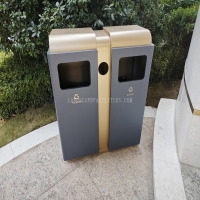Welcome to the website for landscape facilities products and knowledge.
What are the trade-offs between using natural stone versus synthetic materials for landscape tables?
When choosing materials for landscape tables, the debate often centers on natural stone versus synthetic options. Each has distinct advantages and drawbacks, depending on your priorities.
Natural Stone:
- Aesthetics: Natural stone offers unmatched beauty with unique patterns and textures, enhancing outdoor spaces with a timeless, organic look.
- Durability: Highly resistant to weathering, natural stone can last decades with minimal maintenance.
- Cost: Typically more expensive upfront due to extraction and transportation costs.
- Maintenance: Requires periodic sealing to prevent staining and weathering.
Synthetic Materials:
- Affordability: Often cheaper than natural stone, making it a budget-friendly choice.
- Consistency: Uniform in appearance, which can be preferable for modern designs.
- Weight: Lighter and easier to install, but may lack the sturdiness of stone.
- Durability: While durable, some synthetic materials may fade or degrade over time under UV exposure.
Key Trade-Offs:
- Budget vs. Longevity: Synthetic materials save money initially but may need replacement sooner.
- Aesthetics vs. Practicality: Natural stone excels in visual appeal but demands more upkeep.
- Environmental Impact: Natural stone is eco-friendly but resource-intensive to quarry, while synthetics often rely on plastics.
Ultimately, the choice depends on your design goals, budget, and willingness to maintain the table over time.
Related search:

Recommendation
Double-bucket garbage bin, outdoor, metal, multi-color, powder-coated, double-bucket trash can